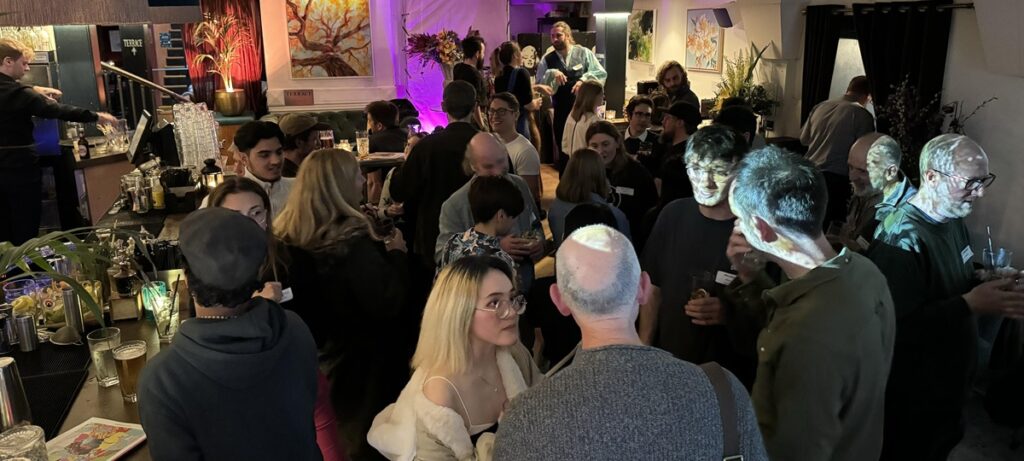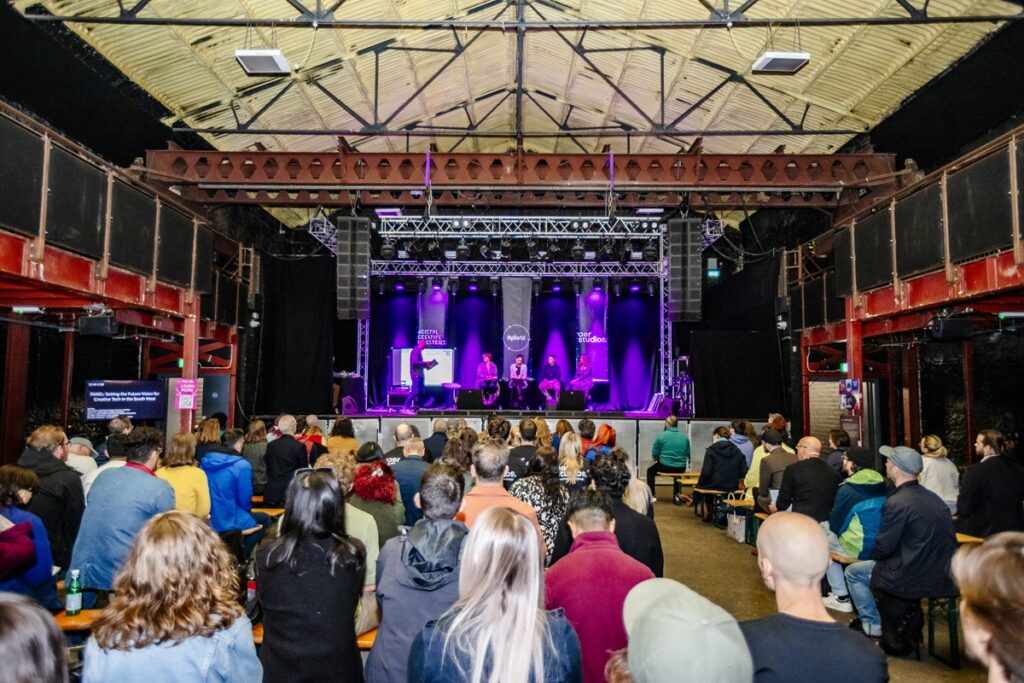
In the rapidly evolving world of Digital PR, it’s easy to feel overwhelmed by the vast amount of information out there. To help you navigate this landscape, we’ve created a concise glossary that breaks down essential terms and concepts you need to know to strengthen your business’s online presence. This guide is designed to simplify Digital PR by focusing on the most relevant terms, explanations and examples that matter for today’s digital strategies.

A
A/B testing
A/B testing is a method of comparing two versions of content to determine which one performs better in engaging or converting an audience.
Example: Testing two different headlines for a blog post to see which one gets more clicks.
Amplification
Amplification in digital PR refers to the strategic sharing and promotion of content across various channels to increase its reach, visibility, and engagement with a wider audience.
Example: Sharing a blog post on social media and sending it in an email newsletter to increase visibility.
Anchor text
Anchor text is the clickable, highlighted text in a hyperlink that leads to another webpage, often optimized with relevant keywords to improve SEO and provide context for both users and search engines.
Example: In the sentence “Check out our Digital PR services to learn more,” the words “Digital PR services” serve as the anchor text.
B
Backlinks
Links from other websites that point back to yours, helping improve your search engine ranking and build authority.
Example: A popular blog links to your website in an article, that link serves as a valuable backlink.
B2B (Business to Business)
Marketing or providing services to other businesses.
Example: A media agency that sells its services to other companies rather than individual consumers.
B2C (Business to Consumer)
Marketing or selling directly to individual consumers.
Example: An online beauty store that sells directly to shoppers through its website.
Broken link
A hyperlink that no longer works and leads to a page that does not exist.
Example: Clicking on a link to a product page that shows a “404 Not Found” error.
C
Call to Action (CTA)
A prompt aimed at encouraging people to take specific actions, like signing up for a newsletter or making a purchase.
Example: A button that says “Subscribe Now” on a newsletter signup form.
Content curation
Content curation is the process of discovering, organizing, and sharing relevant third-party content to engage your audience and enhance your brand’s topical authority.
Example: Sharing trending or important articles on social media to engage followers.
Content marketing
A strategy that focuses on creating valuable content to engage the target audience.
Example: Writing blogs or making videos to educate potential customers.
Community engagement
Community engagement in digital PR involves actively interacting with an online audience through comments, industry forums, and social media to build relationships, trust, and brand loyalty.
Example: Engaging in a LinkedIn group related to your field and answering questions from other members.
D
D2C (Direct to Consumer)
When a company sells products directly to customers without middlemen such as retailers or wholesalers.
Example: A company directly selling its products on its website.
Domain Authority (DA)
Domain authority is a search engine ranking score that predicts how well a website will perform in search engine results, based on factors such as backlink quality and site structure.
Example: A website with a high domain authority is more likely to appear on the first page of Google search results.
Digital footprint
A digital footprint is the trail of data and online activity left by an individual or organization on the internet, which can influence public perception.
Example: Social media posts, comments, and website visits contribute to your digital footprint.
Do-follow link
A hyperlink that allows search engines to follow it to reach the linked website, passing value and authority.
Example: Your page is linked to another site, and inspecting the link shows if it’s a “follow” link.
E
Earned media
Free publicity gained through word-of-mouth or coverage in the media.
Example: A publication writing about your products without payment.
Engagement
How users interact with your content through likes, shares, comments, etc.
Example: A Facebook post with lots of likes and shares indicates strong engagement.
G
Geotargeting
Delivering content or ads based on a user’s location.
Example: Writing an article for a local newspaper, for the audience of that area.
Google Trends
A tool that shows how popular certain search terms are over time.
Example: Checking Google Trends to see how topics like “Minimalism” are trending.
I
Influencer marketing
Partnering with influencers to promote products.
Example: A skincare brand sending products to beauty influencers for review.
Influencer outreach
Contacting influencers to build relationships and promote campaigns.
Example: Sending an email to a blogger inviting them to review a new product.
K
Key Performance Indicators (KPIs)
Metrics used to measure the success of a marketing campaign.
Example: Measuring media mentions as KPIs to evaluate the impact of a digital PR initiative.
L
Link building
Getting other websites to link to yours to improve SEO and gain backlinks.
Example: Writing guest posts that include a link back to your site.
Link juice
The SEO value passed from one site to another through links.
Example: A high-authority site linking to your page can boost your site’s credibility.
N
No-follow Link
A link that doesn’t pass SEO value to the other site, denoted by HTML tag rel=”nofollow”.
Example: A link on a blog with a “no-follow” tag to prevent passing SEO value.
O
Online mention
When a brand is referenced in online content.
Example: A blog post discussing your company and including your brand name.
Organic search
Search results that appear based on relevance rather than paid ads.
Example: Your website appears in top results for “best running shoes” without paying for ads.
Outreach
Contacting media or influencers to promote a story or content.
Example: Reaching out to journalists to pitch a new product launch story.
P
Pitch
A proposal sent to journalists or influencers to promote a story or idea.
Example: Sending a press release to a reporter to cover your company’s new initiative.
Podcasts
A podcast is a digital audio program available for streaming or download, often featuring discussions, interviews, or storytelling.
Example: A marketing podcast discussing industry trends with expert interviews.
Press coverage
Press coverage refers to mentions and features in media outlets, helping build credibility.
Example: A newspaper article highlighting your company’s achievements.
Press release
A written statement to the media announcing newsworthy information.
Example: Announcing a new product launch through a press release.
R
Referral marketing
A form of marketing where businesses encourage customers to recommend their services or products.
Example: Sending a referral code to a friend.
Retention marketing
Retention marketing is a strategy focused on keeping existing customers engaged and encouraging repeat purchases through personalized communication, loyalty programs, and targeted content.
Example: Offering a coupon code when a customer hasn’t placed an order in a while.
S
Short tail keyword
Short tail keywords are brief, general search terms, typically consisting of one or two words, that have high search volume but also high competition, making them important for driving broad traffic.
Example: “Shoes” is a short tail keyword compared to “best-running shoes for women” which is a long tail keyword and drives niche traffic.
Interacting with audiences and promoting content on social platforms.
Example: Responding to comments on Instagram posts and sharing user-generated content.
Social proof is where individuals look to the actions and opinions of others to guide their own decisions, often leveraged in digital PR through testimonials, reviews, and endorsements.
Example: Displaying customer reviews and testimonials on your website to build trust and credibility.
UGC (User-Generated Content)
Content created by users or customers, often used in marketing.
Example: Resharing customer photos wearing your brand’s clothing on social media.
With this glossary, you are now armed with a foundational understanding of Digital PR terminology to support your business’s growth in the digital space. Remember, Digital PR is an ever-evolving field, so staying familiar with these terms will empower you to make informed decisions and adapt to new trends with confidence.
If you are still unsure about any of these terms, don’t hesitate to reach out to our expert team who are happy to help. Contact our expert SEO team.
Varn is an expert specialist SEO search marketing agency. Technical SEO * AI & Innovation; Data Analytics * Offpage SEO

Are Your Benefits Really Working? Why Bristol’s Creatives Are Looking Closer at What They Offer Their Teams

Happy World Entrepreneurs' Day! Get noticed with a Bristol Creative Industries individual and freelancers membership

BTF+ to celebrate Bristol's technology, creativity and culture at six-day festival in October
You need to load content from reCAPTCHA to submit the form. Please note that doing so will share data with third-party providers.
More InformationNotifications